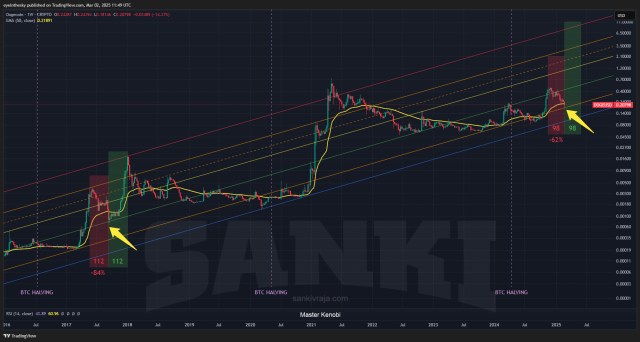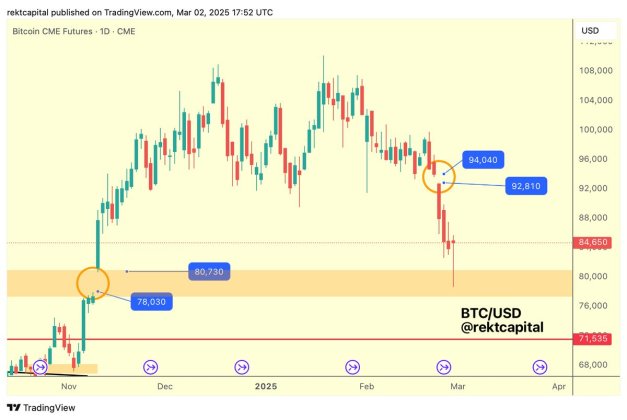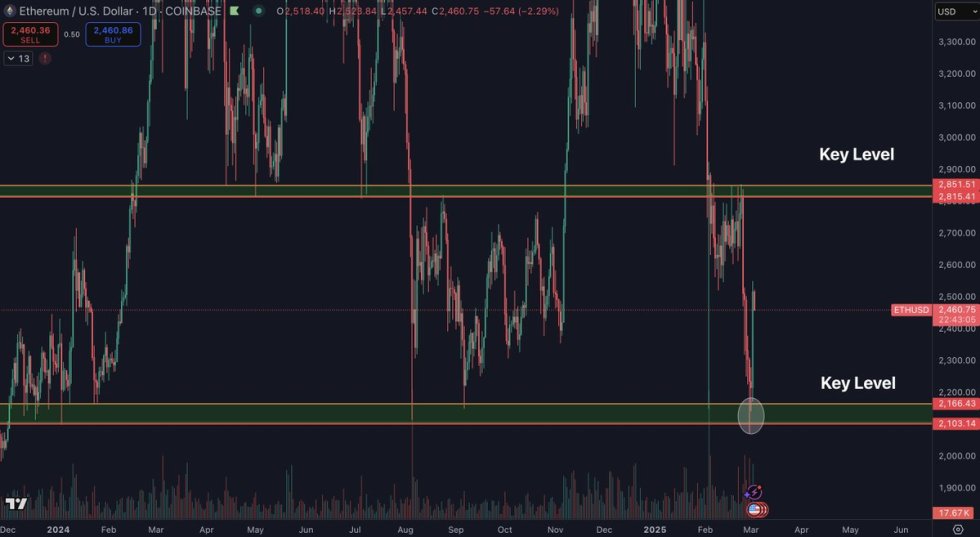During a crypto bear market, and particularly when a macro-financial storm is blowing across the globe, it is easy to lose sight of why crypto pulled attention in the first place. Sentiment is negative and doom-laden, which is exactly the time to return to first principles and get a handle on what is being built and advanced towards, and for what purpose.
Over the last year or so, a lot of hype has been built up around NFTs and the metaverse, with both of those sectors falling within a wider category that is being referred to as web3. As a result, that web3 label is now used loosely, and sometimes even simply as a synonym for crypto, particularly crypto that is related to smart contract blockchains, such as Ethereum and Solana.
As a result, when people begin to doubt crypto, then they might also start to feel a similar way towards the concept of web3 as a whole. That is, bearish on crypto and bearish on web3.
This, however, is like doubting that technological advances will continue simply because tech stocks are down. Or, more concretely, like giving up on the internet after the dot com bubble burst. At such a time, It is worth considering in context exactly what web3 is supposed to mean, where it might be leading, and the likelihood that it will be a key part of the narrative when, as they eventually must, sentiment and structural set-ups reverse back into the beginnings of a bullish phase.
A Tech-Cultural Shift
One explanation you might come across is that while web1 was read-only, and web2 was read and write, web3 is read, write and own. That means that on the early web, you simply consumed static pages, and then later, with web2, you could create your own content, for example through social media and blog writing.
What you still don’t really have, though, is independent ownership of your content, since you’re publishing on centralized platforms, such as Twitter and YouTube. Users are renting space on virtual manors, and are reliant on the structures their digital landlords maintain.
With web3, though, that dynamic shifts. The hope is that decentralized networks will become the new standard, and that digital content and property can be owned and traded without reliance on a closed-off upper layer. And, as it happens, we have examples of that occurring right now, through crypto and NFTs.
Web3 is decentralization, digital ownership and self-custody, it is an online money layer, and, perhaps less obviously, it is an identity layer.
Web3 and Identity
More of everything that we do is occurring at least partly online, and as such, there are parts of our identities scattered across the web. That is, identities, in the plural, because there is a problem: we might have an online financial presence, an online business presence, an online academic presence, and many more, but they are all separate and managed by different third parties.
The various data are stored in a range of places, according to which centralized private platforms we use to conduct each aspect of our online lives, and what’s more, going back to the idea of ownership, we are not in independent control of our own online information.
In a web3 world, users will construct and take ownership of their own digital presence and should be able to keep private or reveal parts of that information as they prefer, to whomever they grant access. It should then be possible to carry that information, or identity, around with you in the digital realm from platform to platform, without the need for centralized database keepers.
Early or Unrealistic?
To be clear, much discussion of web3 revolves around concepts that are yet to be realized, and tech that frequently generates headlines for reasons that may be off-putting to a casual observer.
When a crypto story grabs mainstream attention it often falls into one of two categories: either someone has made a staggering amount of money in ways that don’t make sense from the outside (see, for example, NFTs connected to JPEGs), or someone has lost a staggering amount of money in a hack, scam or act of reckless negligence.
Should we really believe that this eccentric, speculative, high-speed crypto carousel, with its delirious melt-ups and cavernous crashes, is structurally integral to the future of the web? Are we early, or are we just wrapped up in a pipe dream?
There’s a long way to go, but then, Bitcoin is only thirteen years old, and Ethereum didn’t launch until 2015. By way of comparison, the internet was invented in 1969, and the web didn’t emerge until 1989. From there, what’s regarded as the first social media site, Six Degrees, wasn’t running until 1997, and in terms of social media really taking off, Friendster appeared in 2002, Myspace the following year, and Facebook and Twitter in 2006.
Taken in this context, the route being advanced along by Bitcoin, bringing about crypto more widely, which is now segueing into web3, looks to be a natural continuation operating on an even timescale, and forecasts of transformative changes come to sound in keeping with the digital timeline up to now.
During a crypto bear market, and particularly when a macro-financial storm is blowing across the globe, it is easy to lose sight of why crypto pulled attention in the first place. Sentiment is negative and doom-laden, which is exactly the time to return to first principles and get a handle on what is being built and advanced towards, and for what purpose.
Over the last year or so, a lot of hype has been built up around NFTs and the metaverse, with both of those sectors falling within a wider category that is being referred to as web3. As a result, that web3 label is now used loosely, and sometimes even simply as a synonym for crypto, particularly crypto that is related to smart contract blockchains, such as Ethereum and Solana.
As a result, when people begin to doubt crypto, then they might also start to feel a similar way towards the concept of web3 as a whole. That is, bearish on crypto and bearish on web3.
This, however, is like doubting that technological advances will continue simply because tech stocks are down. Or, more concretely, like giving up on the internet after the dot com bubble burst. At such a time, It is worth considering in context exactly what web3 is supposed to mean, where it might be leading, and the likelihood that it will be a key part of the narrative when, as they eventually must, sentiment and structural set-ups reverse back into the beginnings of a bullish phase.
A Tech-Cultural Shift
One explanation you might come across is that while web1 was read-only, and web2 was read and write, web3 is read, write and own. That means that on the early web, you simply consumed static pages, and then later, with web2, you could create your own content, for example through social media and blog writing.
What you still don’t really have, though, is independent ownership of your content, since you’re publishing on centralized platforms, such as Twitter and YouTube. Users are renting space on virtual manors, and are reliant on the structures their digital landlords maintain.
With web3, though, that dynamic shifts. The hope is that decentralized networks will become the new standard, and that digital content and property can be owned and traded without reliance on a closed-off upper layer. And, as it happens, we have examples of that occurring right now, through crypto and NFTs.
Web3 is decentralization, digital ownership and self-custody, it is an online money layer, and, perhaps less obviously, it is an identity layer.
Web3 and Identity
More of everything that we do is occurring at least partly online, and as such, there are parts of our identities scattered across the web. That is, identities, in the plural, because there is a problem: we might have an online financial presence, an online business presence, an online academic presence, and many more, but they are all separate and managed by different third parties.
The various data are stored in a range of places, according to which centralized private platforms we use to conduct each aspect of our online lives, and what’s more, going back to the idea of ownership, we are not in independent control of our own online information.
In a web3 world, users will construct and take ownership of their own digital presence and should be able to keep private or reveal parts of that information as they prefer, to whomever they grant access. It should then be possible to carry that information, or identity, around with you in the digital realm from platform to platform, without the need for centralized database keepers.
Early or Unrealistic?
To be clear, much discussion of web3 revolves around concepts that are yet to be realized, and tech that frequently generates headlines for reasons that may be off-putting to a casual observer.
When a crypto story grabs mainstream attention it often falls into one of two categories: either someone has made a staggering amount of money in ways that don’t make sense from the outside (see, for example, NFTs connected to JPEGs), or someone has lost a staggering amount of money in a hack, scam or act of reckless negligence.
Should we really believe that this eccentric, speculative, high-speed crypto carousel, with its delirious melt-ups and cavernous crashes, is structurally integral to the future of the web? Are we early, or are we just wrapped up in a pipe dream?
There’s a long way to go, but then, Bitcoin is only thirteen years old, and Ethereum didn’t launch until 2015. By way of comparison, the internet was invented in 1969, and the web didn’t emerge until 1989. From there, what’s regarded as the first social media site, Six Degrees, wasn’t running until 1997, and in terms of social media really taking off, Friendster appeared in 2002, Myspace the following year, and Facebook and Twitter in 2006.
Taken in this context, the route being advanced along by Bitcoin, bringing about crypto more widely, which is now segueing into web3, looks to be a natural continuation operating on an even timescale, and forecasts of transformative changes come to sound in keeping with the digital timeline up to now.

You can get bonuses upto $100 FREE BONUS when you:
💰 Install these recommended apps:
💲 SocialGood - 100% Crypto Back on Everyday Shopping
💲 xPortal - The DeFi For The Next Billion
💲 CryptoTab Browser - Lightweight, fast, and ready to mine!
💰 Register on these recommended exchanges:
🟡 Binance🟡 Bitfinex🟡 Bitmart🟡 Bittrex🟡 Bitget
🟡 CoinEx🟡 Crypto.com🟡 Gate.io🟡 Huobi🟡 Kucoin.




















Comments